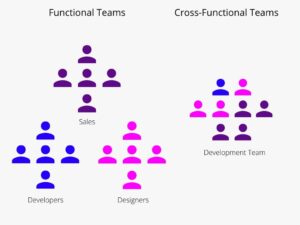The Ultimate IT Budget Planning Checklist for Your Business
As we approach the end of 2025, it’s time for leaders to start planning their budgets for the coming year. With technology constantly evolving and business needs changing, creating a comprehensive IT budget is crucial for ensuring your organization has the resources it needs to thrive next year.
This blog post serves as your ultimate IT budget planning checklist.
1. Review and Analyze Current IT Spending:
- Gather Data: Collect data on your current IT spending for the past year. This includes hardware, software licenses, cloud services, maintenance contracts, and any other IT-related expenses.
- Identify Trends: Analyze spending patterns to identify areas of high cost or underutilization.
- Evaluate ROI: Assess the return on investment (ROI) for existing IT solutions. Are they delivering the expected value?
2. Align IT Budget with Business Goals:
- Understand Business Objectives: Meet with key stakeholders across the business to understand their goals and priorities for the coming year.
- Identify IT Needs: Determine how IT can support and enable these business goals.
- Prioritize Projects: Prioritize IT projects based on their impact on business objectives and overall return on investment.
3. Factor in Emerging Technologies:
- Research New Trends: Stay informed about emerging technologies that could benefit your business, such as artificial intelligence, cybersecurity solutions, or cloud-based collaboration tools.
- Evaluate Potential Impact: Assess how these technologies could improve efficiency, productivity, or security.
- Budget for Adoption: Allocate resources for pilot projects or initial implementation of promising new technologies.
4. Consider Hardware and Software Refresh Cycles:
- Inventory Hardware: Create an inventory of existing hardware, including age, performance, and maintenance requirements.
- Plan for Replacements: Identify hardware nearing the end of its lifespan and factor in replacement costs for the coming year.
- Software Updates: Budget for necessary software upgrades or license renewals.
5. Prioritize Cybersecurity:
- Evaluate Security Posture: Assess your current cybersecurity measures and identify any vulnerabilities.
- Invest in Security Solutions: Allocate resources for essential security solutions like firewalls, endpoint protection, and data encryption.
- Security Awareness Training: Budget for employee cybersecurity awareness training to minimize human error risks.
6. Account for Ongoing IT Support:
- Internal Staff: Factor in the cost of salaries and benefits for your IT staff.
- Managed Service Providers (MSPs): If considering outsourcing IT support, include potential costs for MSP services.
- Professional Development: Allocate resources for ongoing training and professional development for your IT team.
7. Build in Flexibility:
- Unforeseen Costs: Allocate a contingency fund to cover unexpected IT expenses that may arise throughout the year.
- Emerging Opportunities: Leave some room in your budget to capitalize on new opportunities or adapt to changing business needs.
Next Steps to Get Started
However, we understand that juggling this checklist alongside your other responsibilities can be a daunting task.
That’s where Lightway Solutions can help.
Our team of experienced IT professionals can assist you with:
- Conducting a thorough IT assessment: Analyzing your current IT infrastructure and identifying areas for improvement.
- Developing a customized IT budget plan: Aligning your IT budget with your business goals and priorities.
- Identifying and evaluating emerging technologies: Exploring new technologies that can enhance your business operations.
- Optimizing IT spending: Identifying cost-saving opportunities and maximizing your return on investment.
Contact Lightway Solutions today to schedule a consultation and let us help you create an IT budget that drives success for your business in 2026 and beyond.
Read more

3 Hybrid Cloud Architecture Considerations for Small Businesses
Hybrid cloud architecture combines the flexibility of public cloud services with the control and security of on-premises infrastructure.

3 Tips for Managing AR/VR in Your Business
Augmented Reality (AR) and Virtual Reality (VR) are not just for gaming. Managing these technologies in your business presents challenges.

Breaking Down Silos: The Power of Cross-Functional Engineering Teams
Modern businesses are embracing cross-functional engineering teams. These teams bring together software developers, data scientists, cybersecurity experts, and UX designers.
